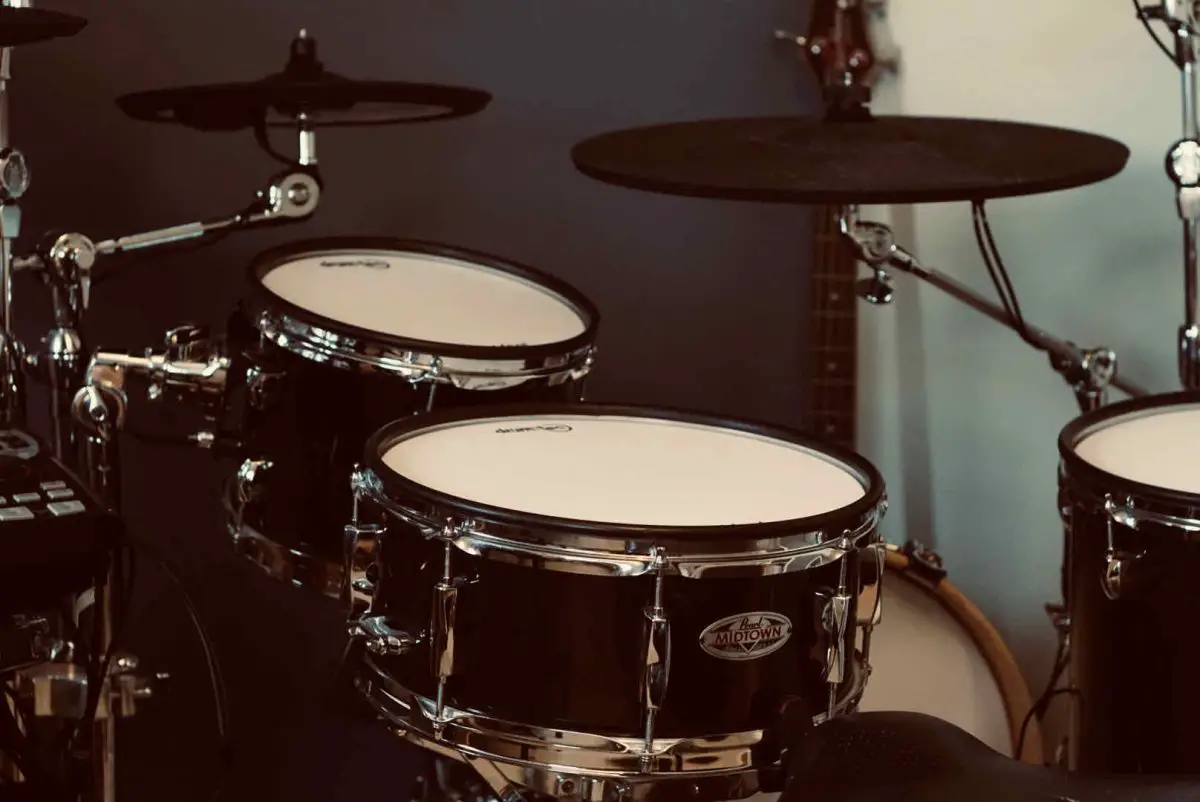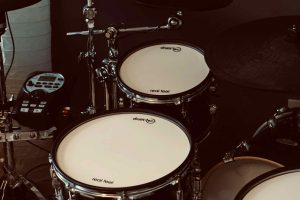Swapping acoustic drums for electronic drums makes a significant difference on the volume created. But the question still remains, are electronic drums still loud? We’ll look at this below.
Understanding airborne noise and impact noise
There are two types of noise – airborne and impact – and electronic drums create both.
Airborne noise
Firstly, airborne noise is what you might typically associate with loud volumes. As the name suggests, airborne noise is sound that travels through the air.
This is the type of noise that is significantly lower on an electronic drum kit compared with an acoustic drum kit. That’s because an acoustic drum sound is airborne noise, the drums and cymbals resonate to produce sound waves. Unfortunately for apartment drummers or anyone who needs to keep the volume down when practising, this is very hard to bring down on an acoustic drum kit.
As you might have guessed, airborne noise is significantly lower on an electronic drum, especially if equipped with mesh heads instead of rubber.
How much lower? According to Roland, acoustic drums come in anywhere between 90 decibels (similar to a motorcycle engine revving) up to 120 decibels (similar to a jet engine). Meanwhile, Electronic drums with mesh heads come in at between 60 decibels (the volume of a normal conversation) to 75 decibels (a car driving past on a street).
Impact noise
When it comes to electronic drums, impact noise is the main thing to consider when it comes to volume control.
Impact noise is the sound that’s created when an object hits another object. On eDrums, that’s when the bass pedal beater hits your bass trigger, or your foot coming down on the hi-hat pedal.
This is the type of noise that can potentially cause issues for eDrummers and their neighbours, particularly apartment drummers. In fact, the most common questions about noise reduction that I’ve seen on Reddit are to do with impact noise transmitting through the walls and floors.
Can you hear electronic drums through walls?
As you might imagine, impact noise from electronic drums tends to be loudest in a room directly below where your eDrums are set up, but can also transmit through walls. This is especially important to consider if you live in an apartment, but is also applicable to anyone who’s not living in a detached house, and has their eDrums in a room that’s next to the shared wall.
How to reduce the impact noise of your electronic drums
Fortunately, there are ways you can reduce the impact noise of your electronic drums, and in turn build a more harmonious relationship with your neighbours.
One commercially available solution is Roland’s range of Noise Eater products. These help to isolate all the parts of your drums that create impact noise from the floor and come in various types:
- Footboards or platforms to mount hi-hat stands or bass pedals to
- Sound isolating feet to mount your eDrum rack on top of
- Bass pedals and hi-hat stands with the isolating base built directly into them
Noise Eaters work by isolating the drums from the ground using semi-circle domes filled with air. This dampens the vibrations created so they don’t transmit into the floor as harshly.
While they don’t eliminate all the impact noise created, they do have a significant positive impact. It’s not possible to measure directly, since ‘decibels’ don’t work as a measurement for impact noise, but at a rough estimate Noise Eaters can remove around 80% of the impact noise.
The downside is that Roland Noise eaters can be quite expensive, so it’s worth looking at DIY options. Fortunately, it is relatively easy to build your own DIY Roland Noise Eaters for a fraction of the cost. Click on the link to follow our guide and make your own!
We also offer three other ways to make your eDrums quieter in our roundup of cheaper Noise Eater alternatives.
The bottom line
While electronic drums are significantly lower in volume than acoustic drums, the fact is they can still be loud due to impact noise transmitted through the floors. But as we’ve seen, the good news is that this can be controlled. Our tip is to factor either Noise Eaters or other DIY alternatives into the cost of your electronic drums purchase if you think noise might be an important consideration.


